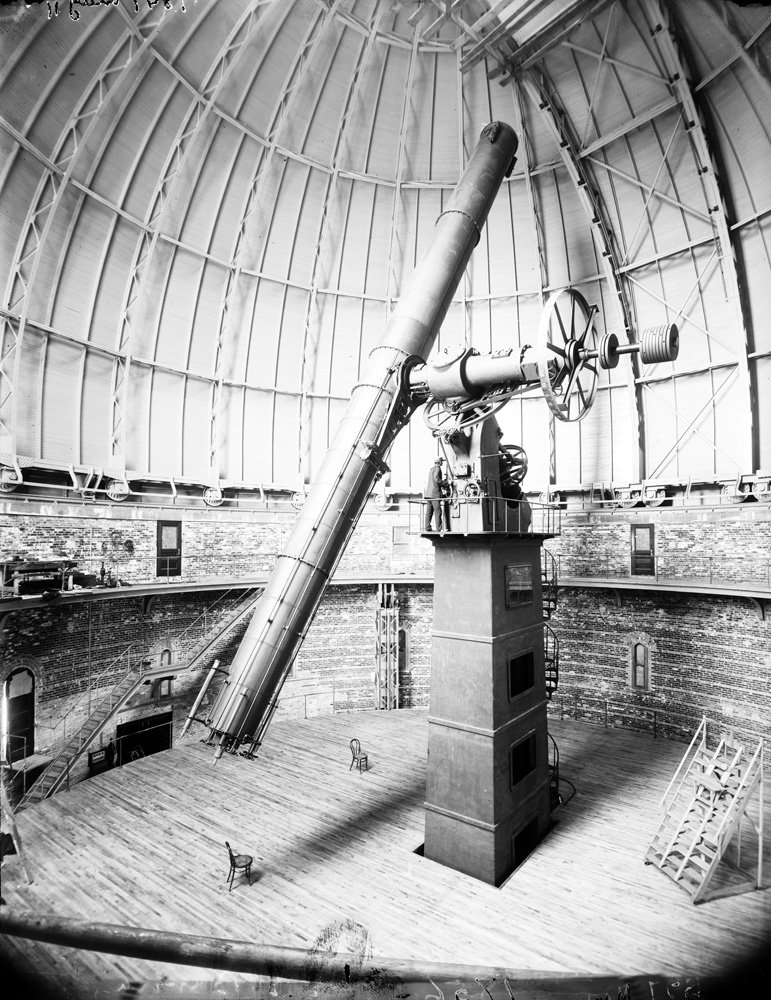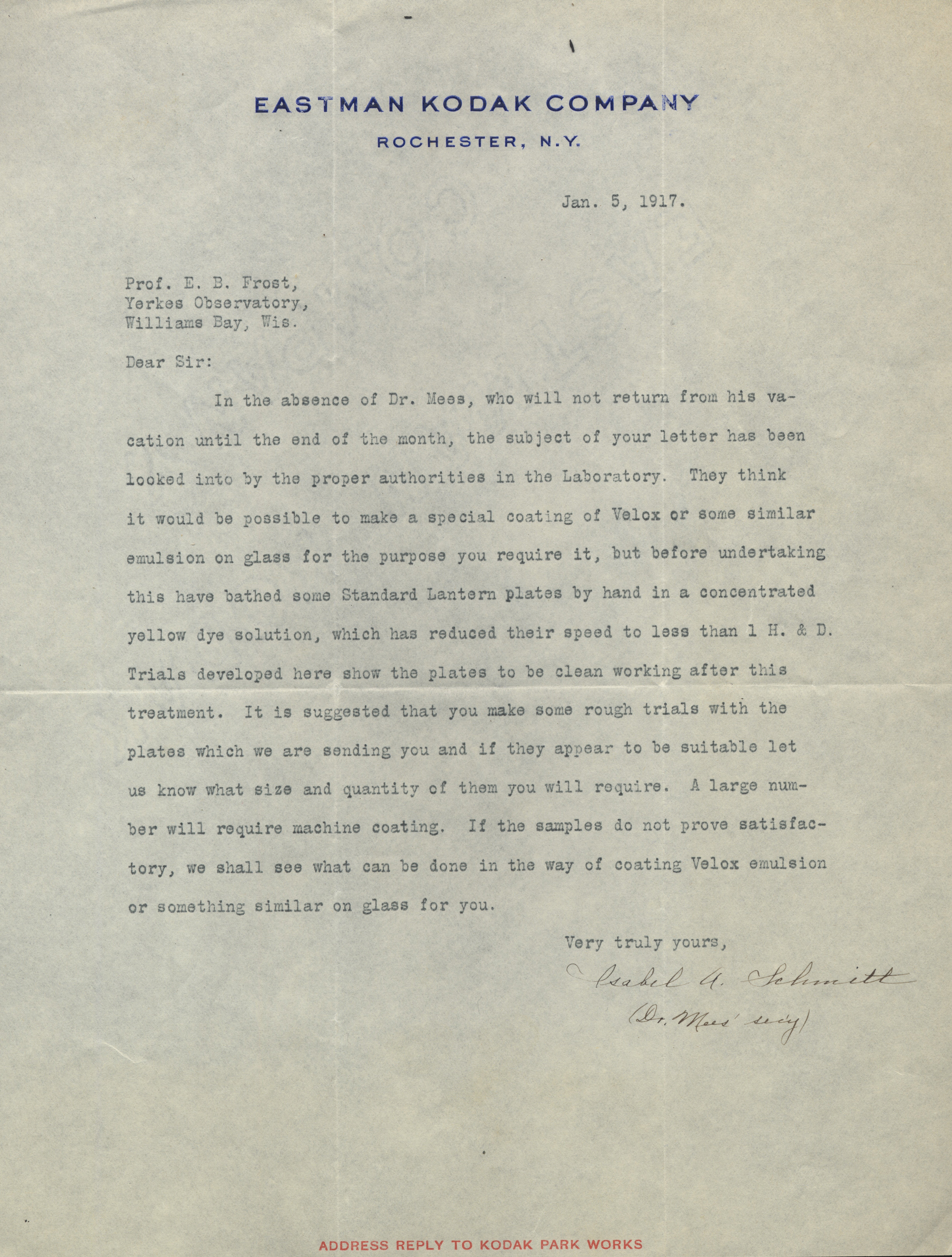Photography
Yerkes Observatory, Office of the Director Records
Photographic plate technology evolved rapidly in the years between 1900 and 1930. This was in large part due to collaborations between observatories like Yerkes and plate manufacturers such as Eastman Kodak.
By 1900, photography had transformed the study of astronomy. It did not entirely replace visual observations, for there were cases in which the human eye was better able to discern detail than the chemically treated glass plates used in photography. Photographs were nevertheless increasingly important for three main reasons: (1) the longer the exposure, the fainter the stars that could be recorded; (2) once exposed and processed, plates were highly stable and permitted accurate and precise measurement; (3) plates could be saved and stored, which meant that images of the sky at specific moments were available for future research.


